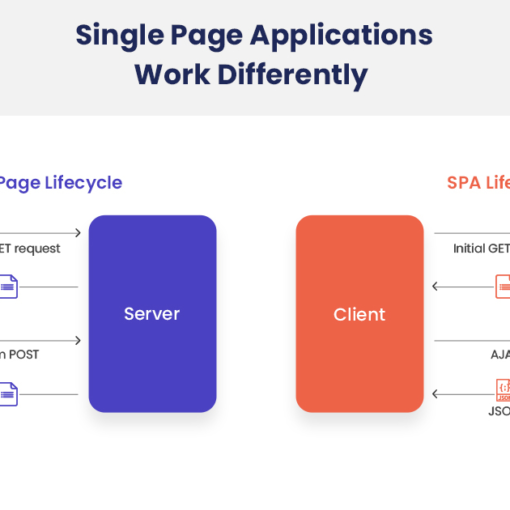In the heart of every successful enterprise, data integrity reigns supreme. As organizations embrace the agility and scalability of SAP Business Technology Platform (BTP), ensuring data consistency within ABAP cloud environments remains paramount. SAP LUWs (Logical Units of Work), the gatekeepers of data integrity, undergo a transformation in the cloud to adapt to distributed architectures and new development paradigms. This comprehensive guide delves into the intricacies of SAP LUW in ABAP Cloud, empowering you to navigate this essential concept and ensure data integrity in your cloud-based ABAP applications.

Understanding SAP LUWs: The Guardians of Data Integrity
- Defining LUWs: An SAP LUW serves as an indivisible unit of work, ensuring consistency across multiple database operations. It encompasses a series of actions that either collectively succeed or fail, safeguarding data integrity.
- Classical LUWs: In traditional on-premise systems, LUWs typically spanned from a user’s action to database commit. However, cloud environments necessitate adjustments to accommodate distributed architectures and modern development approaches.
Key Characteristics of SAP LUW in ABAP Cloud
- Distributed LUWs: ABAP cloud applications often span multiple microservices, each with its own database context. LUWs extend across these services, ensuring consistency even in distributed environments.
- Controlled LUWs: The cloud-specific Controlled LUW concept introduces explicit phases for modification and saving of data, enabling fine-grained control over transactions.
- Integration with Modern Frameworks: LUWs seamlessly integrate with frameworks like RAP (RESTful ABAP Programming) and Cloud Application Programming Model (CAP) to ensure consistency within modern development paradigms.
Key Considerations for Working with SAP LUW in ABAP Cloud
- Identifying LUW Boundaries: Understanding the scope of LUWs within your application is crucial for designing robust and consistent data operations.
- Managing LUW Phases: Cloud-specific LUW phases, such as the interaction phase and save phase in RAP, require careful management to ensure correct data handling.
- Utilizing LUW-Aware Tools: SAP provides tools like the Custom Code Migration app to analyze code for LUW compatibility and potential issues in the cloud environment.
- Testing and Validation: Thorough testing of LUW behavior in your ABAP cloud applications is essential to guarantee data integrity and consistency.
Common Scenarios and Best Practices
- Updating Multiple Database Tables: LUWs ensure consistency when updating multiple tables, preventing partial updates in case of errors.
- Calling External Services: When integrating with external systems, LUWs ensure that data changes are either committed or rolled back together, maintaining integrity across systems.
- Asynchronous Processing: Handling asynchronous processes within LUWs requires careful design to ensure data consistency, potentially involving techniques like background processing frameworks.
Advanced Strategies for Data Integrity and Consistency
Welcome back, intrepid data guardians! In Part 1, we explored the fundamentals of SAP LUWs in the ABAP Cloud environment. Now, let’s dive deeper into advanced concepts and best practices to ensure data integrity and consistency within your cloud-based ABAP applications.
Navigating the Maze of Distributed Transactions:
- Two-Phase Commit (2PC): This protocol ensures atomicity across multiple databases involved in a single LUW, guaranteeing either complete success or rollback of all changes in case of failure.
- SAGA Patterns: For intricate workflows involving multiple microservices, utilizing SAGA patterns provides distributed transaction management, ensuring consistency even if individual steps within the LUW fail.
- Event Sourcing: This architecture helps maintain data consistency by storing a complete sequence of events instead of traditional database tables. Changes are appended as new events, enabling replayability and simplified conflict resolution.
Optimizing Performance and Avoiding Bottlenecks:
- Coarse-grained LUWs: Minimize the scope of LUWs to avoid unnecessary locking and improve concurrency. Focus on smaller units of work encompassing related database operations.
- Optimistic Locking: Leverage optimistic locking mechanisms to reduce database locks and improve performance. Developers check for data conflicts only at commit time, allowing concurrent access until then.
- Caching Strategies: Implement caching mechanisms for frequently accessed data to minimize database calls and improve responsiveness within distributed LUW environments.
Troubleshooting and Debugging LUW Issues:
- Transaction Logs: Analyze transaction logs to identify failed LUWs and pinpoint the source of data inconsistencies. Logs detail transaction phases, errors, and rollback activities.
- Debugging Tools: Utilize SAP-provided tools like the ABAP Test Cockpit and Code Inspector to analyze code for potential LUW issues, particularly regarding phase handling and resource utilization.
- Performance Monitoring: Monitor transaction times and resource usage within LUWs to identify potential bottlenecks and areas for optimization.
Best Practices for Building Robust LUW Management:
- Document LUW Boundaries: Clearly document the scope and boundaries of each LUW within your application code, promoting understanding and facilitating maintenance.
- Adopt Consistent Patterns: Establish and enforce consistent patterns for LUW management across your development team to ensure predictable behavior and minimize errors.
- Automate Testing and Validation: Integrate automated testing methodologies to validate LUW behavior and data integrity within your continuous integration/continuous delivery (CI/CD) pipeline.
Beyond the Basics: Advanced LUW Concepts
- Nested LUWs: Explore the concept of nested LUWs, where smaller transactions operate within a larger LUW, providing flexibility and granular control over data consistency.
- Compensation Transactions: Understand how compensation transactions automatically reverse successful changes within a LUW if subsequent steps fail, ensuring overall data consistency.
- LUW Aggregation: Learn how to aggregate smaller LUWs into larger units for performance optimization when appropriate, balancing efficiency with data integrity considerations.
Embrace the Future of Data Consistency:
As the cloud landscape evolves, the role of SAP LUWs continues to adapt and enhance. By mastering these advanced concepts and best practices, you can ensure the data integrity and consistency that form the bedrock of your cloud-based ABAP applications. Remember, navigating the intricate world of LUWs is an ongoing journey, one filled with opportunities to optimize, innovate, and ultimately safeguard the heart of your business applications: your valuable data.
You may be interested in:
How to check your custom ABAP code for SAP BTP ABAP Environment




